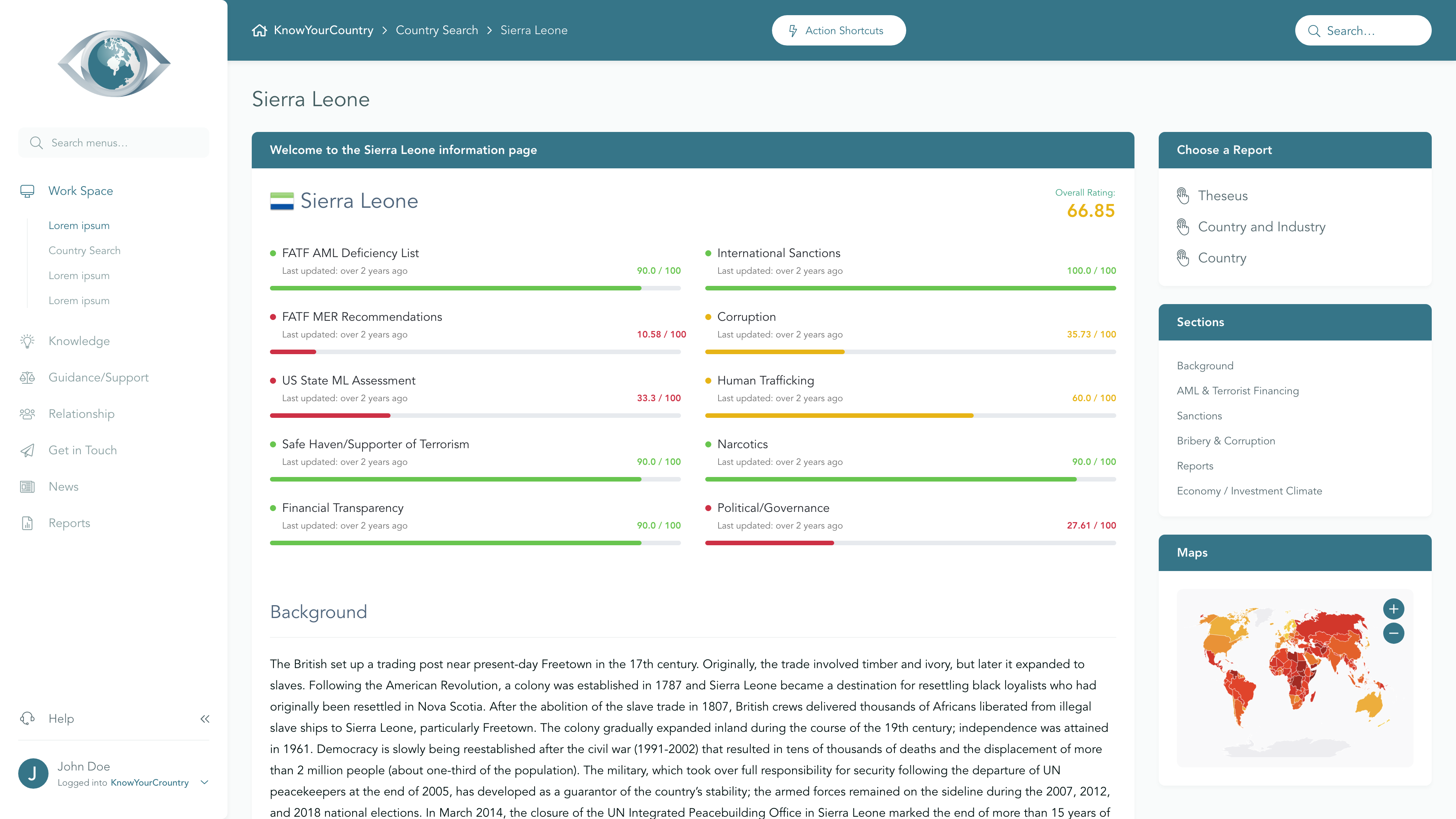
Peru Country Summary
Medium Risk
View full Ratings TableSanctions
Lower Concern
FATF AML Deficient List
Lower Concern
Terrorism
Medium Concern
Corruption
Higher Concern
US State ML Assessment
Higher Concern
Criminal Markets (GI Index)
Medium Concern
EU Tax Blacklist
Lower Concern
Offshore Finance Center
Lower Concern
Please note that although the below Summary will give a general outline of the AML risks associated with the jurisdiction, if you are a Regulated entity then you may need to demonstrate that your Jurisdictional AML risk assessment has included a full assessment of the risk elements that have been identified as underpinning overall Country AML risk. To satisfy these requirements, we would recommend that you use our Subscription area.
If you would like a demo of our Subscription area, please reserve a day/time that suits you best using this link, or you may Contact Us for further information.
Anti Money Laundering
FATF Status
Peru is not on the FATF List of Countries that have been identified as having strategic AML deficiencies
Compliance with FATF Recommendations
The latest follow-up Mutual Evaluation Report relating to the implementation of anti-money laundering and counter-terrorist financing standards in Peru was undertaken in 2020. According to that Evaluation, Peru was deemed Compliant for 16 and Largely Compliant for 19 of the FATF 40 Recommendations. It remains Highly Effective for 0 and Substantially Effective for 4 with regard to the 11 areas of Effectiveness of its AML/CFT Regime.
Sanctions
There are currently no international sanctions in force against Peru.
Criminality
Rating |
0 (bad) - 100 (good) |
|---|---|
| Transparency International Corruption Index | 31 |
| World Bank: Control of Corruption Percentile Rank | 25 |
Corruption in Peru is deeply entrenched, affecting various levels of government and society, with issues such as embezzlement, bribery, and extortion prevalent in the justice system and public procurement processes. Despite some legislative efforts aimed at reforming procurement laws and enhancing transparency, the pervasive culture of corruption continues to undermine public trust and complicate governance, while organized crime networks exploit the situation, engaging in activities like human trafficking, drug production, and environmental crimes.
Economy
Peru's economy has experienced significant fluctuations in recent years, with a notable contraction of 0.6% in GDP in 2023, following a growth of 2.7% in 2022, largely attributed to political instability and social conflicts that have undermined investor confidence. The Central Reserve Bank of Peru forecasts a recovery in 2024, projecting a GDP rebound of 3.0%, supported by increased government spending aimed at stimulating growth during the recession. Despite these challenges, Peru maintains a relatively open investment climate, with strong protections for foreign investors and a focus on attracting private sector investment, particularly in infrastructure and key economic sectors, although corruption and ongoing social conflicts pose risks to the investment environment.
Subscribe to
Professional Plus

- Unlimited Access to full Risk Reports
- Full Dataset Download
- API Access
- Virtual Asset Risk Assessments

